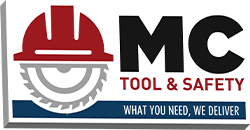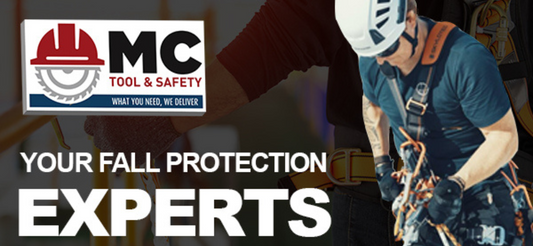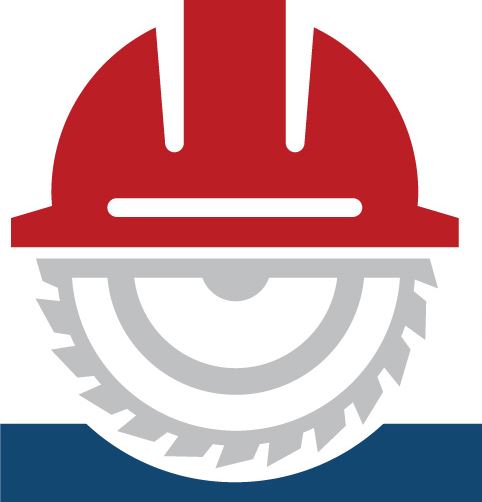Falling for Safety: Jobsite Guidelines to Keep You Off the Ground (In a Good Way)
Welcome back, safety warriors! So far in this series, we’ve discussed why fall protection is crucial and how to choose the right gear. Now, it’s time to put that knowledge to work and make sure your jobsite isn’t an accident waiting to happen. This blog is your ultimate guide to staying on the right side of OSHA, keeping your crew safe, and making sure nobody gets an unexpected lesson in gravity.

Understanding OSHA's Fall Protection Standards:
Let’s be honest: nobody reads OSHA’s entire handbook for fun. (If you do, we need to talk.) But their fall protection regulations exist for a reason. Here are the highlights:
-
Height Matters: OSHA requires fall protection at elevations of six feet in construction and four feet in general industry. If you're working on a scaffold, it's ten feet. For steelworkers? A daring 15 feet. (OSHA Standard 1926.501)
-
Guardrails, Safety Nets, and Personal Fall Arrest Systems (PFAS): Jobsites must use one or more of these. Guardrails are your first line of defense. Safety nets are your last. PFAS—like harnesses and lanyards—are your personal safety net.
-
Anchor Points: No, you can’t just tie off to any random beam and call it good. Anchor points must support at least 5,000 pounds per worker.
-
Inspections Matter: All fall protection equipment must be regularly inspected for damage. If your harness looks like it survived a bear attack, it’s time for a new one.
This information provided by OSHA; read more detailed OSHA standards here.
The Jobsite Safety Checklist:
Before the workday starts, run through this checklist. Your bones (and your insurance premiums) will thank you:
✔ Assess the Risks: Identify all areas where fall hazards exist—rooftops, scaffolding, leading edges, ladders, etc.
✔ Choose the Right Protection: Use the hierarchy of fall protection (eliminate hazards first, then use guardrails, then personal fall arrest systems).
✔ Inspect All Gear: Check harnesses, lanyards, anchor points, and connectors before use. If something looks off, don’t risk it.
✔ Ensure Proper Training: Every worker using fall protection must be trained. A harness is only effective if worn and used correctly.
✔ Maintain Clear Work Areas: Cluttered work zones increase fall risks. Keep cords, tools, and materials organized.
✔ Monitor Weather Conditions: Rain, ice, and wind can turn a normal workday into an extreme sport. Adapt your safety measures accordingly.

The Gear That Keeps You Safe:
At MC Tool & Safety, we carry top-of-the-line fall protection equipment from FallTech and SafeWaze. Here are some standout products that should be on every jobsite:
-
FallTech F-One Series Harness – Built for comfort and durability, with ergonomic padding and heavy-duty webbing.
-
SafeWaze P-Slate Harness (021-182X) – Lightweight yet strong, designed for maximum mobility.
-
V-SELECT Harness (022-1075) – A premium harness with additional D-ring options for versatility.
-
FallTech Confined Space Tripod System (019-11003) – Ideal for confined spaces where rescue operations might be necessary.
-
SafeWaze Retrieval Harness (022-1951) – Designed specifically for rescue and retrieval scenarios.
Every jobsite has different needs, so make sure you're getting the right gear for the job. Not sure what you need? That’s why we’re here—call us, email us, or just show up with a cup of coffee, and we’ll help you out.
Common Fall Protection Mistakes (And How to Avoid Them):
Even the best-intentioned safety programs can go sideways if workers aren’t following procedures. Avoid these common pitfalls:
❌ Not Wearing a Harness Properly – A loose harness is like a seatbelt you refuse to buckle. Adjust it for a snug fit—no slacking allowed.
❌ Improper Anchor Points – Tying off to a questionable beam or pipe isn’t just unsafe—it’s downright reckless. Use OSHA-approved anchor points only.
❌ Using Expired or Damaged Equipment – Fall protection gear has a shelf life. Frayed straps, rusted buckles, and worn-out lanyards won’t do you any favors.
❌ Skipping Inspections – If you don’t check your gear, you might be the unlucky one to find out the hard way that it’s compromised.
❌ Lack of Training – Knowing how to wear fall protection equipment is just as important as having it. Every worker should be properly trained and refreshed regularly.
Final Thoughts: Safety is No Accident
At the end of the day, fall protection isn’t just about avoiding citations—it’s about making sure everyone goes home in one piece. Invest in the right gear, follow safety protocols, and create a culture where fall protection is taken seriously.
Want expert advice on your jobsite’s fall protection needs?
Visit MC Tool & Safety
Stop by: 2851 84th Lane NE, Blaine, MN 55449
Give us a call: 763-786-5350
We’ll make sure you’re geared up and gravity-proof.
Until next time—stay safe, stay strapped in, and keep your feet where they belong (on solid ground)!





